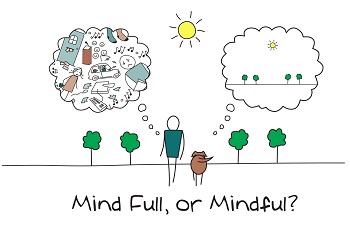Defining Mindfulness and Experiencing the CALM Classroom
CALM is Children and communities Achieving Lifelong Mindfulness (together in Groveton ES)
What is mindfulness?
Daniel Rechtschaffen, author of The Mindful Education Workbook, says it best:
"The field of mindfulness in education is young, but the research is already confirming what thousands of teachers and students are learning firsthand.
- For teachers mindfulness reduces stress, helps them focus, and makes them more happy (Roeser at al, 2013).
- Students are more emotionally regulated and attentive, and their learning improves. The classrooms are more peaceful, there are fewer school conflicts, and kids like each other more (Zoogman et al., 2014).
"These are preliminary results from teaching mindfulness to youth, and research from teaching mindfulness to adults is well established. For adults practicing mindfulness has been shown to positively transform everything from brain architecture to immune function, positive affect, and even gene expression (Tang et al., 2015).
"A potent description of mindfulness is from the movie Kung Fu Panda. in which the wise old turtle Oogway says: Yesterday is history, tomorrow is a mystery, but today is a gift. That is why it is called the present.
"Being mindful is something we have all done a million times, and some people who have never heard of mindfulness are already really good at it. Being mindful means that we are showing up fully for each moment, paying attention with an open heart.
"We all have mindful moments when we are engaged with our students, and we can really feel the impact we are making. Being mindful is not something we create, it’s a natural state of mind we return to when we are settled in our bodies and attuned to the world around us.
"Often kids are a lot more mindful than we are, absorbed in the wonder of the moment, though they may not be particularly attentive to the specific things we want them to be mindful of."

CALM Presentation to the School Health Advisory Committee
A CALM classroom
If you were to walk into our CALM classroom, you may observe students:
- Breathing with purpose
- Learning to be present
- Being calm, relaxed, and focused
- Learning to self-regulate, or make good choices
- Using CALM poses such as CALM burrito, cricket rub, CALM vitamin, cozy mats, mindful bed making, mindful mats, happy tiger, mindful eating, crisscross yoga sauce, duck breathing, waterfall, paint the room, and a whole lot more!
- Experiencing calming chimes
- Learning strategies that will comfort and help understand emotions
- Learning a common language
Please enjoy our CALM Featured News to get a more visual idea of a day in the life of a mindful, CALM classroom.

